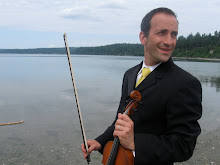Very Young Child Advent Spiral Garden
The Advent Wreath by Gertrude Mueller Nelson
Ancient peoples who lived in the far north and who suffered the archetypal loss of life and light with the disappearance of the sun had a way of wooing back life and hope. These people did not separate the natural phenomenon from their religious or mystical yearning, so nature and mystery remained combined.
As the days grew shorter and colder and the sun threatened to abandon the earth, these ancient people suffered the sort of guilt and separation anxiety which we also know. Their solution was to bring all ordinary action and daily routine to a halt. They gave in to the nature of winter, came away from their carts and wagons, festooned them with greens and lights, and brought them indoors as a sign of a different time, a time to stop and turn inward. They engaged the feelings of cold and fear and loss. Slowly, slowly the wooed the sun-god back. And light followed darkness. Morning came earlier. These festivals announced the return of hope and primal darkness. This kind of success - hauling the very sun back: the recovery of hope- can only be accomplished when we have the courage to stop and wait and engage fully in the winter of our dark longing. Perhaps the symbolic energy of those wheels made sacred has escaped us and we wish to relegate our Advent wreaths to the realm of quaint custom or pretty decoration. Symbolism, however, has the power to put us directly in touch with a force or idea by means of an image or an object - a "thing" can do that for us. The symbolic action bridges the gulf between knowing and believing. It integrates mind and heart. As we go about the process of clipping our greens and winding them on a hoop, we use our hands, we smell the pungent smell that fills the room, we think about our action. Our imagination is stirred.
Imagine what would happen if we were to understand that ancient prescription for this season literally and remove -just one- say the right front tire from our automobiles and use this for our Advent wreath. Indeed, things would stop. Our daily routines would come to a halt and we would have the leisure to incubate. We could attend to our precarious pregnancy and look after ourselves. Having to stay put, we would lose the opportunity to escape or deny our feelings or becomings because our cars could not bring us away to the circus in town. But to sacrifice our wheel means not so much "to do without" wheels as it means to "make holy" this stopped time. Sacra ficere means to make holy, and holy means hale, Healthy, whole. And it is not easy to make
this time holy. We recognize that the search for holy is so urgent and real that we are vulnerable to the lure that the commercial world offers in its promise to fill in the gaps that we so painfully feel...
During Advent, we are invited to be vulnerable to our longings and open to our hope. Like the pregnant mother who counts the days till her labor and prepares little things for the child on the way, we count the days and increase the light as we light our candles and prepare our gifts... We make the wreath and light the candles, and we will gain the courage to stop the wheeling and dealing of our outer life: to sacrifice the wheels that grind away at outward "progress" at the cost of peace and justice in this distraction. The sacrificed wheel of the Advent wreath encourages us to stop and wait. The symbolic life offers us a way to live those feelings which we might otherwise avoid or deny or rationalize away. The symbols speak directly to the heart."

No comments:
Post a Comment